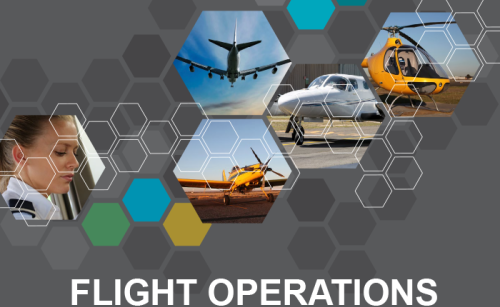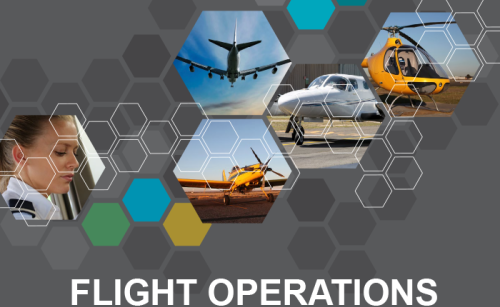Article supplied by CASA Can’t locate that Civil Aviation Advisory Publication (CAAP) you always refer to? Don’t know where to find the form to apply for something? It may no longer exist.
When the new flight operations rules began on 2 December, the guidance material and forms also needed to change. Some documents have been updated; others are no longer needed.
Guidance material
We have compiled a list of CAAPs and ACs that have been removed from our website. You’ll find it below.
It’s easy to find current guidance material. Simply click on the type of guidance material you are after and then narrow your search. And don’t forget to click on any Associated Documents, where you may find useful Annexes.
Forms
There are two new forms for regulatory service applications – one for Air Operator’s Certificate (AOC) holders and Part 138 Aerial Work Certificate holders, the other is for Aerial Work Certificate holders only. (There is also a form for Balloon AOC holders.) In nearly all cases, if you’re applying for an air transport or aerial work activity, you only need to use these forms. This includes:
- making an initial application
- requesting a renewal or removal of aircraft or activities
- applying for a significant change or to make notification to CASA of a non-significant change.
There are some application forms that you no longer need to complete. This is because the outcomes-based nature of the rules means that certain activities may have already been approved in your Exposition/Operations Manual and variations to these approvals are now assessed via a significant change application.
All the current forms related to the new flight operations rules. You’ll also find guidance material on management of change including significant and non-significant change.
General tips
CASA is experiencing a significant increase in the number of regulatory services applications, and we currently have a backlog. When contacting us:
- Check whether you still need to seek approval for that activity in the new regulations.
- Remember that we only need to be notified of non-significant change, while permission needs to be sought for significant change.
- If your application has a time critical component please identify this in your email so we can triage appropriately.
- If your application is not time critical you may not hear from us with a job number for a period of time. We will get to your job as quickly as possible.
You may also wish to consider using an industry delegate.
Once your job has been allocated to a team manager you will contacted by email and given advice about when the job will be completed.
More information
Visit the flight operations rules.
Ask a question through our online form.
Guidance material that has been removed
- CAAP SMS-01 – Safety Management Systems for Regular Public Transport Operations
- CAAP SMS-2 – Integration of Human Factors (HF) into Safety Management Systems (SMS)
- CAAP SMS-3 – Non-Technical Skills Training and Assessment for Regular Public Transport Operations
- Appendix A to CAAP SMS-3 – Developing a Non‐Technical Skills Training Program: A Case Study Approach
- Appendix B to CAAP SMS-3 – Enhancing Performance in High Risk Environments – Recommendations for the use of Behavioural Markers
- Appendix C to CAAP SMS-3 – Example of a high capacity airline’s non‐technical skills assessment
- CAAP SMS-4 – Guidance on the establishment of a Flight Data Analysis Program (FDAP) – Safety Management Systems (SMS)
- CAAP 20.4-01 – Supplemental Oxygen Requirements for Cabin Crew Members in Pressurised Aircraft Above Flight Level 250
- CAAP 89W-1 – Guidelines on provision of obstacle information for take-off flight planning purposes
- AC 91U-02 – Required Navigation Performance 10 (RNP 10) – Operational Certificate
- AC 91U-03 – Required Navigation Performance 4 (RNP 4) – Operational Certificate
- CAAP 92A-1 – Guidelines on aerodromes intended for small aeroplanes conducting RPT operations
- CAAP 92-1 – Guidelines for aeroplane landing area
- CAAP 92-3 – Guidelines for manned balloon launching and landing areas
- CAAP 155-1 – Aerobatics
- CAAP 157-1 – Balloon flight over populous areas
- CAAP 166-01 – Operations in the vicinity of non-controlled aerodromes
- CAAP 166-02 – Pilots’ responsibility for collision avoidance in the vicinity of non-controlled aerodromes using ‘see-and-avoid’
- CAAP 174-01 – Night vision imaging – helicopters
- CAAP 178-1 – Non-precision Approaches (NPA) & Approaches with Vertical Guidance (APV)
- CAAP 179A-1 – Guidelines for navigation using GNSS
- CAAP 215-1 – Guide to the preparation of operations manuals
- Annex A to CAAP 215-1 – Policy Procedures
- Annex B to CAAP 215-1 – Aircraft Operations
- Annex C to CAAP 215-1 – Aerodromes and Routes
- Annex D to CAAP 215-1 – Training and Checking
- Annex E to CAAP 215-1(3.2) – List of Headings
- CAAP 217-1 – CAR 217 Flight Crew-Training and checking organisations
- CAAP 233-1 – Electronic Flight Bags
- CAAP 234-1 – Guidelines for aircraft fuel requirements
- Annex A to CAAP 234-1 – Sample fuel calculations – Single-engine piston aeroplane (Cessna 210)
- Annex B to CAAP 234-1 – Sample fuel calculations – Multi-engine turboprop aeroplane (Beechcraft B200)
- Annex C to CAAP 234-1 – Sample fuel calculations – Multi-engine turbojet aeroplane (Learjet 60)
- CAAP 235A-1 – Minimum Runway Width – for aeroplanes engaged in RPT and Charter operations with a maximum take-off weight greater than 5700 kg
- CAAP 235-1 – Standard passenger and baggage weights
- CAAP 235-2(2) – Carriage and restraint of small children in aircraft
- CAAP 235-3 – RPT operations in multiengine aeroplanes with MTOW not above 5700kg – aeroplane weight and performance limitations
- CAAP 235-4 – Guidelines for the Consideration and Design of: Engine Out SID (EOSID) and Engine Out Missed Approach Procedures
- CAAP 235-05 – New performance provisions for CAO 20.7.1B and CAO 20.7.4
- CAAP 253-1 – Ditching
- CAAP 253-02 – Passenger safety information: Guidelines on content and standard of safety information to be provided to passengers by aircraft operators
- CAAP 257-EX-02 – Conduct of practice autoland operations



